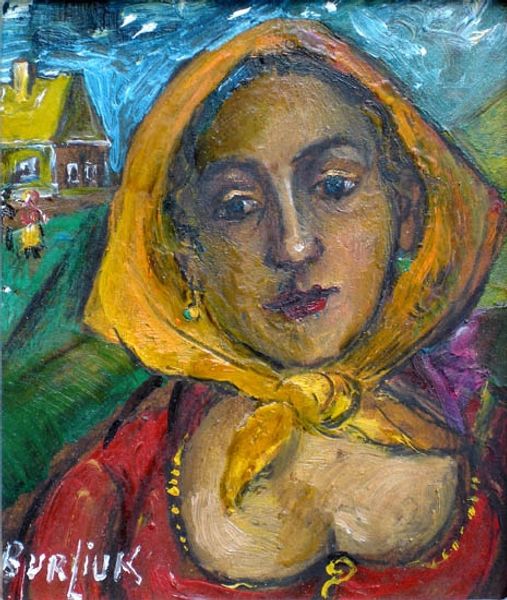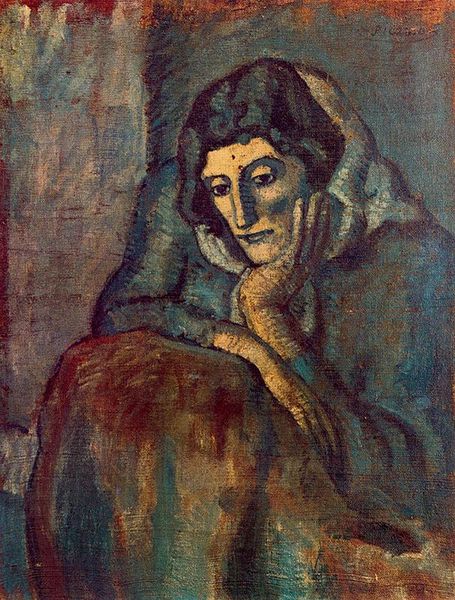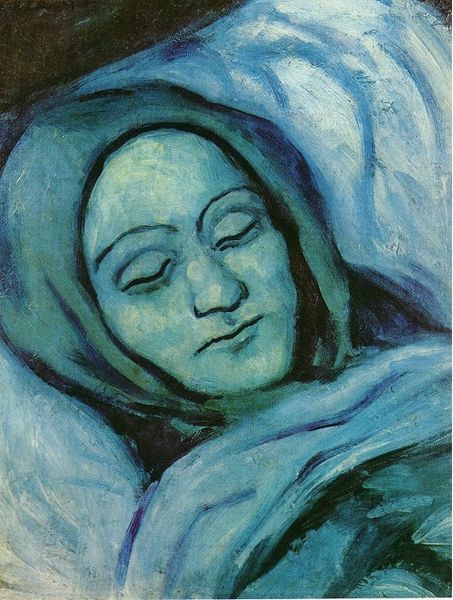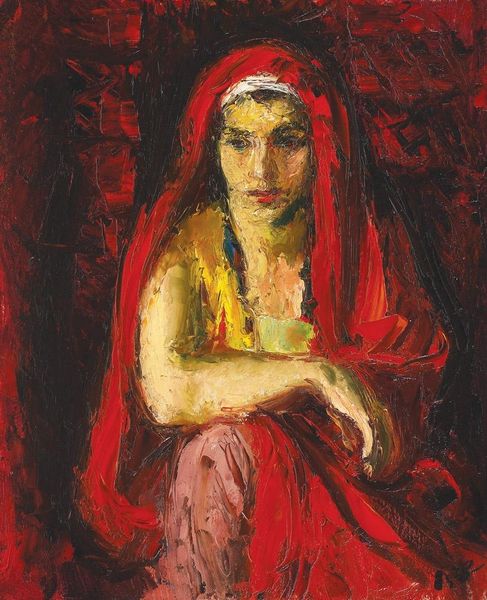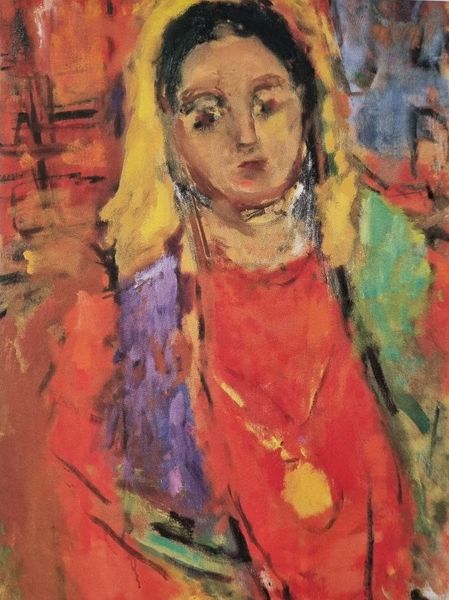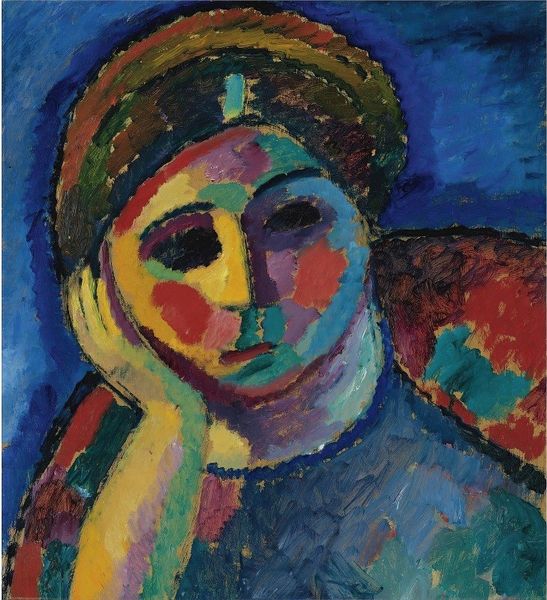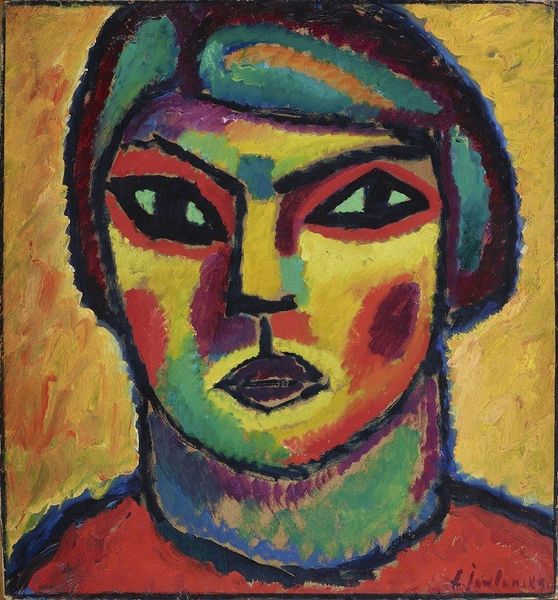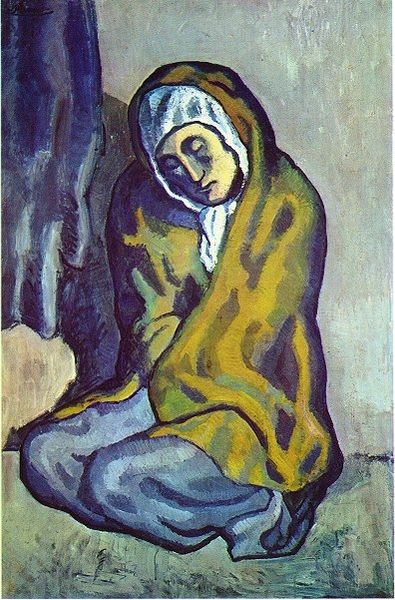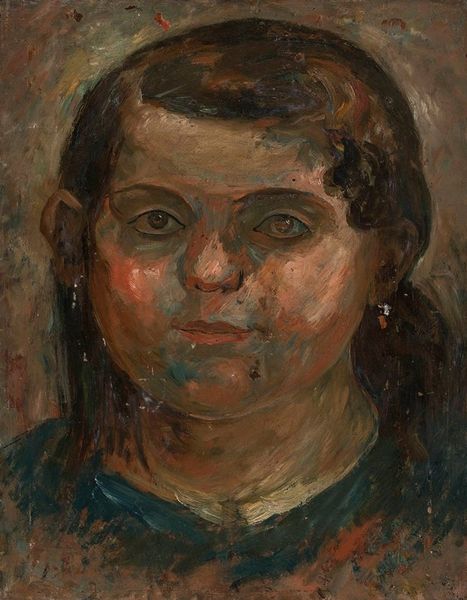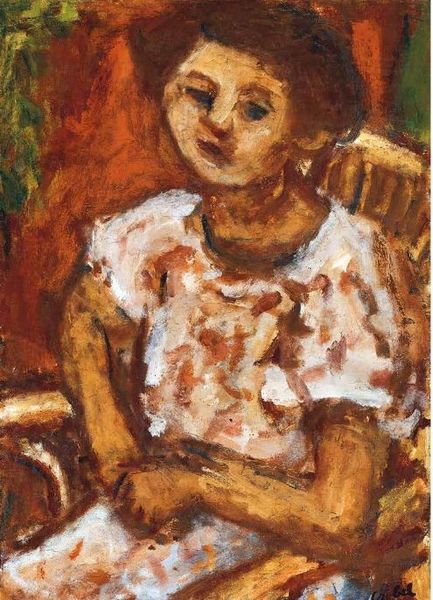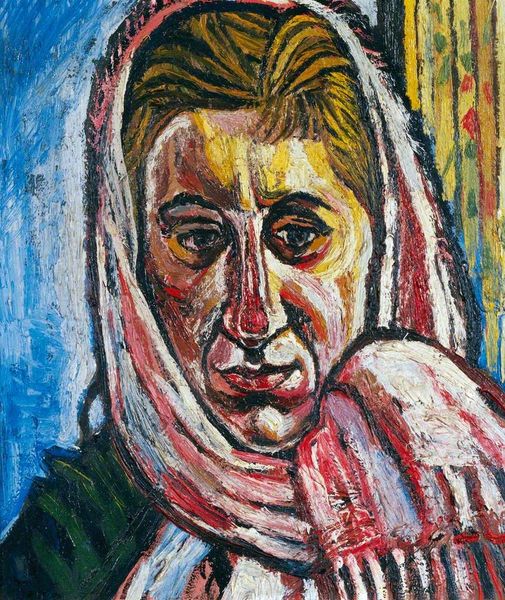
drawing, oil-paint, pencil
#
portrait
#
drawing
#
oil-paint
#
oil painting
#
pencil
#
expressionism
Copyright: Public domain
Editor: So, we're looking at Istvan Nagy's "Little Girl with Yellow Babushka" from 1917. It looks like it’s a drawing done with oil paint and maybe pencil, which is a unique combination. I’m really struck by the direct gaze of the subject and the almost unsettling color palette. What can you tell me about this piece? Curator: For me, the power resides in the material reality of the work. Oil paint and pencil are juxtaposed. Oil usually signifies richness, value, and perhaps the upper classes, while pencil implies quick, cheap, on-the-go studies. But in 1917, think about material shortages and the reuse of materials due to war. Is Nagy making a virtue of necessity? High art blending into craft in a moment of historical exigency? What does the yellow babushka signify in this environment of materiality? Editor: That's interesting. I hadn’t thought about the wartime context impacting the materials themselves. Does the "ordinariness" of the materials maybe highlight the subject, this “little girl” instead? Curator: Precisely. What is usually hidden by artifice is now presented in the raw. The choice of those media challenges assumptions about artistic skill and subject matter during that historical period, doesn’t it? This child confronts the world with an honesty perhaps linked to that very scarcity. Editor: I see what you mean. By considering the materials and the historical background, we gain a deeper understanding of what Nagy was trying to express about the child and the world she inhabited. I never would have gotten there on my own! Curator: Considering how artworks are produced in specific conditions really gives a new appreciation, doesn’t it? Hopefully, this approach will allow you to discover more layers of significance in future explorations.
Comments
No comments
Be the first to comment and join the conversation on the ultimate creative platform.
